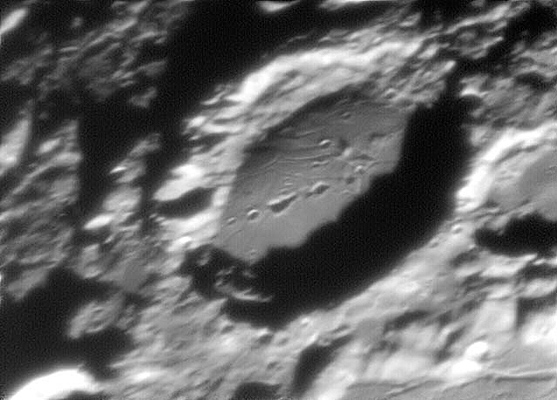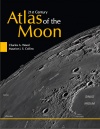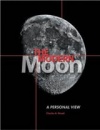Difference between revisions of "April 3, 2004"
| Line 1: | Line 1: | ||
__NOTOC__ | __NOTOC__ | ||
=Mercy, Mersenius!= | =Mercy, Mersenius!= | ||
| − | |||
| − | |||
<table width="640" border="0" align="center" cellpadding="6" cellspacing="2"> | <table width="640" border="0" align="center" cellpadding="6" cellspacing="2"> | ||
| − | + | <tr> | |
| − | + | </tr> | |
| − | |||
| − | |||
| − | |||
</table> | </table> | ||
<table width="85%" border="0" align="center" cellpadding="6" cellspacing="2"> | <table width="85%" border="0" align="center" cellpadding="6" cellspacing="2"> | ||
| − | + | <tr> | |
| − | + | <td colspan="2"><div align="center"> | |
| − | + | [[File:LPOD-2004-04-03.jpeg|LPOD-2004-04-03.jpeg]]</div> | |
| − | + | </td> | |
| − | + | </tr> | |
| − | |||
</table> | </table> | ||
<table width="100%" border="0" cellpadding="8"> | <table width="100%" border="0" cellpadding="8"> | ||
| − | + | <tr> | |
| − | + | <td><div align="center" span class="main_sm">Image Credit: [mailto:benoit_schillings@yahoo.com Benoit Schillings]</div></td> | |
| − | + | </tr> | |
</table> | </table> | ||
| − | |||
<table class="story" border="0" bgcolor="#FFFFFF" width="90%" cellpadding="10" align="center"><tr><td> | <table class="story" border="0" bgcolor="#FFFFFF" width="90%" cellpadding="10" align="center"><tr><td> | ||
| − | + | <p class="story" align="center"><b>Mercy, Mersenius! </b></p> | |
| − | + | <p class="story" align="left"> Mersenius is in the second rank of lunar craters. Not a must-see like Copernicus, Plato or Gassendi, but a good | |
| − | + | crater with more interesting features than are obvious. Mersenius is 84 km wide and about 2.3 km deep. But as has | |
| − | + | been known for more than 125 years, Mersenius appears to have a domed floor so its depth may be more varied than | |
| − | + | for normal craters. In his 1876 book, <I>The Moon</I>, Neison quoted Schmidt as saying that Mersenius had a | |
| − | + | "strongly-convex" floor and estimated its center to be 450 m higher than near the walls. This remarkable low sun | |
| − | + | image by Benoit Schillings gives little evidence for a gradually decreasing elevation westward from the center | |
| − | + | of the floor, but does show a shadow/depression where the west wall meets the floor. It seems unlikely that this | |
| − | + | alone is 450 m of relief, but then all these shadow measurements are ancient - are there no modern measurements | |
| − | + | of this crater's geometry? The line of overlapping craters on the floor are aligned with Imbrium, and thus may be | |
| − | + | distant secondaries from that basin-forming impact. The image also reveals more delicate rilles on the crater's | |
| − | + | floor than I have seen on any other Earth-based image. These are very difficult to image or observe - even the | |
| − | + | Great Schmidt of Athens saw only two, and they were "very difficult." Small pyroclastic | |
| − | + | [../02/LPOD-2004-02-10.htm deposits] have also been detected around the rilles. | |
| − | + | Mersenius must be another floor-fractured [../02/LPOD-2004-02-10.htm crater]. </p> | |
| − | + | <blockquote> | |
| − | + | <p align="right" class="story">— [mailto:tychocrater@yahoo.com Chuck Wood]</p> | |
| − | + | </blockquote> <p><b>Technical Details:</b><br> | |
| − | + | Taken with an 18 inch F/4.5 newtonian, double barlow with a firewire 640x480 camera; combination of | |
| − | + | about 150 frames. Image processing (image registrration etc...) done with home-made software which | |
| − | + | on top of doing frame selection and alignement, distorts the images to counter the distortion induce | |
| − | + | by the seeing - this helps a lot for the image quality. With a normal regular best fit stack, you | |
| − | + | will always have a better resolution at or near the registration point. My algorithm does a | |
| − | + | distortion of the whole image to get an overall best fit for the whole image, not just for a single | |
| − | + | point. </p> | |
| − | + | <p class="story"><b>Related Links:</b><br> | |
| − | + | [http://www.astrosurf.com/benoit/#PLimages Benoit Schillings Web Page]<br> | |
| − | + | [http://www.lpi.usra.edu/research/lunar_orbiter/images/img/iv_149_h1.jpg Lunar Orbiter View]</p> | |
| − | + | <p class="story"> <b>Tomorrow's LPOD:</b> Conjunctions Galore!</p> | |
| − | + | </td> | |
| − | |||
| − | |||
| − | |||
| − | |||
| − | |||
| − | |||
| − | |||
</tr> | </tr> | ||
</table> | </table> | ||
| − | + | <!-- start bottom --> | |
| − | + | <hr> | |
| − | + | <p align="center" class="main_titles"><b>Author & Editor:</b><br> | |
| − | + | [mailto:tychocrater@yahoo.com Charles A. Wood]</p> | |
| − | + | <p align="center" class="main_titles"><b>Technical Consultant:</b><br> | |
| − | + | [mailto:anthony@perseus.gr Anthony Ayiomamitis]</p> | |
| − | + | <p align="center" class="main_titles"><b>A service of:</b><br> | |
| − | + | [http://www.observingthesky.org/ ObservingTheSky.Org]</p> | |
| − | + | <p align="center" class="main_titles"><b>Visit these other PODs:</b> <br> | |
| − | + | [http://antwrp.gsfc.nasa.gov/apod/astropix.html Astronomy] | [http://www.msss.com/ Mars] | [http://epod.usra.edu/ Earth]</p> | |
| − | + | <p> </p> | |
| − | |||
| − | |||
| − | |||
| − | |||
| − | |||
---- | ---- | ||
===COMMENTS?=== | ===COMMENTS?=== | ||
Click on this icon [[image:PostIcon.jpg]] at the upper right to post a comment. | Click on this icon [[image:PostIcon.jpg]] at the upper right to post a comment. | ||
Revision as of 18:18, 4 January 2015
Mercy, Mersenius!
Image Credit: Benoit Schillings |
|
Mercy, Mersenius! Mersenius is in the second rank of lunar craters. Not a must-see like Copernicus, Plato or Gassendi, but a good crater with more interesting features than are obvious. Mersenius is 84 km wide and about 2.3 km deep. But as has been known for more than 125 years, Mersenius appears to have a domed floor so its depth may be more varied than for normal craters. In his 1876 book, The Moon, Neison quoted Schmidt as saying that Mersenius had a "strongly-convex" floor and estimated its center to be 450 m higher than near the walls. This remarkable low sun image by Benoit Schillings gives little evidence for a gradually decreasing elevation westward from the center of the floor, but does show a shadow/depression where the west wall meets the floor. It seems unlikely that this alone is 450 m of relief, but then all these shadow measurements are ancient - are there no modern measurements of this crater's geometry? The line of overlapping craters on the floor are aligned with Imbrium, and thus may be distant secondaries from that basin-forming impact. The image also reveals more delicate rilles on the crater's floor than I have seen on any other Earth-based image. These are very difficult to image or observe - even the Great Schmidt of Athens saw only two, and they were "very difficult." Small pyroclastic [../02/LPOD-2004-02-10.htm deposits] have also been detected around the rilles. Mersenius must be another floor-fractured [../02/LPOD-2004-02-10.htm crater]. Technical Details: Taken with an 18 inch F/4.5 newtonian, double barlow with a firewire 640x480 camera; combination of about 150 frames. Image processing (image registrration etc...) done with home-made software which on top of doing frame selection and alignement, distorts the images to counter the distortion induce by the seeing - this helps a lot for the image quality. With a normal regular best fit stack, you will always have a better resolution at or near the registration point. My algorithm does a distortion of the whole image to get an overall best fit for the whole image, not just for a single point.Related Links: Tomorrow's LPOD: Conjunctions Galore! |
Author & Editor:
Charles A. Wood
Technical Consultant:
Anthony Ayiomamitis
A service of:
ObservingTheSky.Org
Visit these other PODs:
Astronomy | Mars | Earth
COMMENTS?
Click on this icon File:PostIcon.jpg at the upper right to post a comment.




